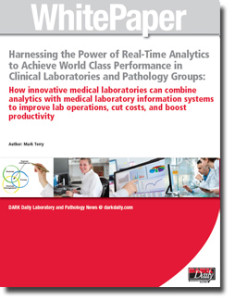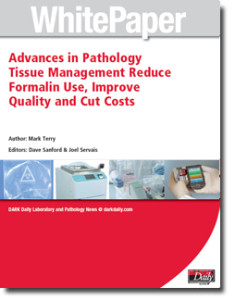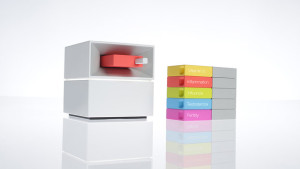Sep 8, 2014 | Coding, Billing, and Collections, Compliance, Legal, and Malpractice, Instruments & Equipment, Laboratory Hiring & Human Resources, Laboratory Instruments & Laboratory Equipment, Laboratory Management and Operations, Laboratory News, Laboratory Operations, Laboratory Pathology, News From Dark Daily
Blame it on shrinking hospital budgets and reduced lab testing prices; successful labs are using Lean, Six Sigma, and process improvement to reduce expenses and boost quality
Topic number one at clinical laboratories and anatomic pathology groups across the nation is cost-cutting, for two reasons. First, it is budget time at hospitals and labs are being told to aggressively reduce their costs in 2015. Second, health insurers are paying less for medical lab testing.
Simply said, labs are experiencing one of the toughest financial squeezes in two decades. Dark Daily has written about the underlying trends responsible for this financial pressure. Nationally, hospital inpatient admissions are down at the same time that hospitals are being paid less per inpatient. In response, hospitals are asking all clinical departments—including their clinical laboratories—to prune staff and cut budgets for 2015. (more…)
Aug 30, 2014 | Instruments & Equipment, Laboratory Management and Operations, Laboratory News, Laboratory Operations, Laboratory Pathology, Laboratory Testing
Recent White Papers detail solutions for medical laboratories and pathology groups
Medical laboratories and pathology groups are facing enormous levels of change in their clinical, regulatory and financial environments. As the Affordable Care Act (ACA) is implemented. labs see downward pressure on reimbursement at the federal and payer level, coupled with increased emphasis on efficiency and quality. Couple that with a shift from fee-for-service reimbursement to fee-for-quality reimbursement strategies, and clinical laboratories and pathology groups are pushed to find tools to increase their competitiveness.
DarkDaily.com is pleased to offer two recently published free White Papers which can show laboratory managers and pathologists how to more effectively make changes to improve workflow, increase efficiency and safety, and identify, evaluate and solve problems as they are occurring.
“Harnessing the Power of Real-Time Analytics to Achieve World Class Performance in Clinical Laboratories and Pathology Groups: How innovative medical laboratories can combine analytics with medical laboratory information systems to improve lab operations, cut costs, and boost productivity” outlines how laboratories can draw on business, logistical and medical data inherent in the laboratory information systems (LIS) to more effectively make changes to improve workflow, increase efficiency, and identify, valuate, and solve problems as they occur.

Another White Paper, “Advances in Pathology Tissue Management Reduce Formalin Use, Improve Quality and Cut Costs” offers a look at the risks of formalin use, trends in formalin use and disposal, and how laboratory and operating room workflow is affected by it. Alternate methods for storing and preserving pathology specimens is introduced as are descriptions of changes to workflow, benefits in terms of healthcare worker safety, and the safety and economic benefits of these changes.

DarkDaily readers can access free White Papers on a variety of topics. In a typical month, DarkDaily.com is visited by pathology laboratory managers and professional in as many as 180 different countries across the globe.
Aug 27, 2014 | Digital Pathology, Instruments & Equipment, Laboratory Instruments & Laboratory Equipment, Laboratory Management and Operations, Laboratory News, Laboratory Operations, Laboratory Pathology
Company says it will offer five diagnostic tests that are useful to the public and some of these tests are among the highest volume tests performed by clinical labs
Heading to market is another device that works with a smartphone to provide consumers with a way to perform five popular medical laboratory tests. The product was developed by Cue, Inc., which describes itself as an entrepreneurial mobile diagnostics developer.
Cue is an at-home lab test device targeted at consumers. It will be priced at about $300, noted a report published by MobiHealthNews.
“We’re very interested in putting the power of the lab into the consumer’s hands in this new way,” said Clint Sever, Cue Cofounder and Chief Product Officer. However, pending Food and Drug Administration (FDA) clearance, Cue’s device is being presold under an “investigational exception” for $199, with promise of delivery in spring 2015.
Cue Allows Consumers to Perform Five Routine Lab Tests at Home
Initially, Cue will perform tests for influenza; testosterone; vitamin D; C-reactive protein (a marker for inflammation); and luteinizing hormone (an indicator of a women’s fertility) But that is just for starters.
According to Ayub Khattak, Cue Cofounder and CEO, the company plans to add more medical lab tests in the future. “The large majority of tests you do in the [clinical] lab today, we want to give you access to in your home,” he declared.

Ayub Khattak (pictured above), Cue Cofounder and CEO, says the Cue device will initially preform five routine tests, but other lab tests will be available in the future, (Photo copyright Cue)
In its blog about Cue, IEE Spectrum noted that the first five clinical laboratory tests the company designed to run on its device were selected because these are the most common tests run by labs and, therefore, are the most useful to the public. Sever and Khattak observed in the MobiHealthNews story that all of these tests—except the influenza test—are used in monitoring a patient’s condition and are done regularly.
Athletes and older men, for instance, want to keep tabs on their testosterone levels. People are interested in Vitamin D because it affects mood. Clinical laboratories perform 70-million Vitamin D yearly, according to Khattak. Inflammation is both a predictor of heart disease and a counter indicator for intense workouts, so if the tests indicated elevated C-reactive protein, a person may want to back off from exercise for a little while, he added. The test for luteinizing hormone tells a woman when she is likely to conceive.
The influenza test, on the other hand, allows parents or other caretakers to check for flu at home, similar to taking a child’s temperature. Sever emphasized that the flu test isn’t meant to replace a doctor visit. “It just gives you more information so you can have an informed conversation with your doctor,” he said.
How the Cue Device Works
The Cue device is about the size of a Rubik’s cube. The test cartridges are about the size of a matchbox. Each cartridge uses blood, saliva, or mucus samples to conduct home lab tests. Each cartridge contains microfluidic channels and the necessary reagents for the test to be performed.
When the cartridge is inserted, Cue prompts the user to collect a sample with the sample wand that is included with the device, explained the IEE Spectrum blog. The testosterone test requires a saliva specimen. The flu test uses a nasal swab, and the other tests require a drop of blood as the specimen.
Once the sample wand is inserted into the cartridge, the reagents combine with the sample inside the cartridge. A sensor then looks for the target molecule, such as testosterone or Vitamin D, and detects the quantity or level. Cue sends this information via Bluetooth to the user’s iPhone or Android smartphone. The smartphone app allows the user to track results over time, and offers suggestions for improving health status. For example, Sever said Cue might recommend specific foods or exercise to boost low testosterone level.
Can Cue Produce More Accurate Tests Than Clinical Laboratories?
Khattak can’t make claims about the accuracy of Cue’s technology because it hasn’t yet been cleared by the FDA, noted the MobiHealthNews story. But the devices inventors believe that Cue tests have the potential to be more accurate than those performed in clinical laboratories, because the human error factor is eliminated.
“What we’ve done is we simplified and automated the whole process,” explained Khattak. “So whereas a lab technician might have 10 steps and they might do 10 of them quite well, those little errors in each of the steps add up. And human error is the largest cause of variation and deviation from standard reproducible results… With us, it is one step. You add the sample, and then you get your results.”

Cue, a modular, Rubik-cube-sized device, uses simple microfluidic laboratory technology to perform five different medical laboratory tests that people routinely have done, including testosterone and vitamin D levels, inflammation, fertility and influenza. The device is being presold under an investigational exception to consumers for $199, with promise of delivery in spring 2015. Once approved by the FDA, the price will be $300. (Photo copyright Cue)
Investors are Successful Tech Entrepreneurs and Diagnostics Experts
Clinical laboratory managers might find it interesting that Cue investors are successful entrepreneurs with expertise in both diagnostics and digital technologies. The investor group includes two University of California, Los Angeles (UCLA) professors, as well as an anonymous private investor, noted MobiHealthNews.
One of the UCLA professors is Aydogan Ozcan, Ph.D., who heads up UCLA Engineering’s Bio- and Nano-Photonics Laboratory. His private company, Holomic, also develops smartphone diagnostic devices. Dark Daily has written about Ozcan’s work. (See Dark Daily, “Tiny, Simple-to-Use Lensless Microscope Might Soon Find a Place in Pathology,” June 25, 2010.)
The other founder is Patrick Soon-Shiong, M.D., a former UCLA Medical Professor, who currently serves on the advisory board of UCLA Engineering’s Institute for Technology Advancement. Known as “LA’s billionaire doctor,” Soon-Shiong, a surgeon-turned-entrepreneur, is co-inventor on more than 40 U.S. and foreign patents and has sold two successful businesses for $8.5 billion.
Last year, Soon-Shiong launched Los Angeles-based Nantworks, LLC, a company that aims to revolutionize medicine by adding “Big Data” to patient care. Soon-Shiong also serves as Providence Health & Services’ Director for Cancer Services and Bioinformatics.
Will Consumers Pay for a Device that Does Medical Lab Tests at Home?
Will consumers be willing to pay $199 for a medical laboratory testing device that hooks up to their smartphone or tablet PC? The founders of Cue will find out next year, assuming that FDA clearance is forthcoming and the device reaches the market. Also, will Cue perform medical lab tests with accuracy that is comparable with that of the nation’s best clinical laboratories? There are many pathologists and lab scientists who will be prepared to challenge that statement.
—By Patricia Kirk
Related Information:
Cue to offer at-home, smartphone connected lab tests
New Gadget Gives Consumers At-Home Lab Tests
New iPhone App Allows Consumers to Test Their Urine on the Go for as Many as 25 Different Diseases
Tiny, Simple-to-Use Lensless Microscope Might Soon Find a Place in Pathology







